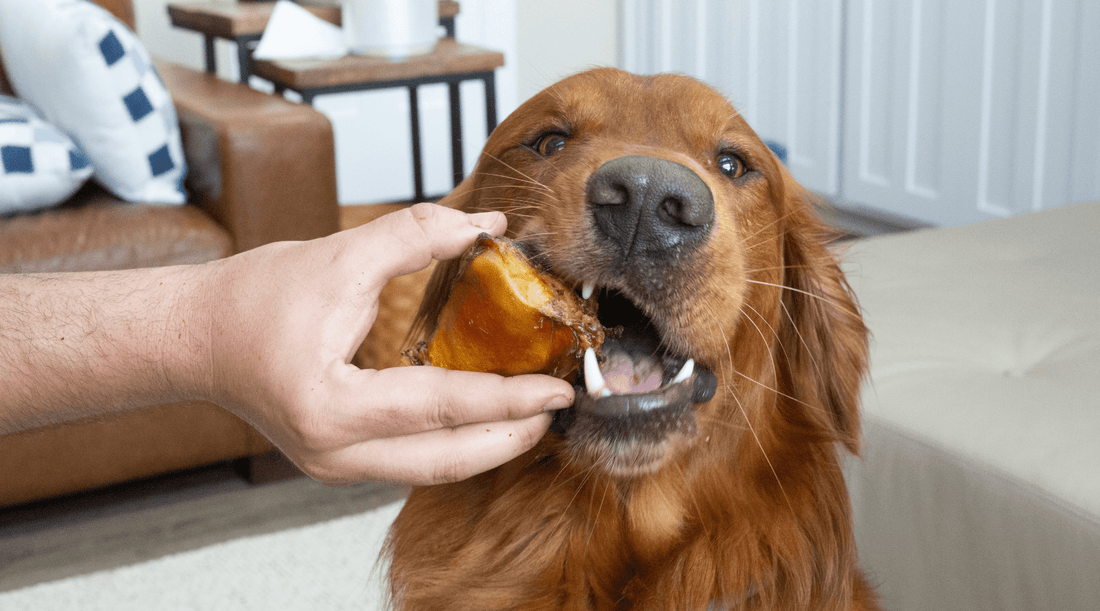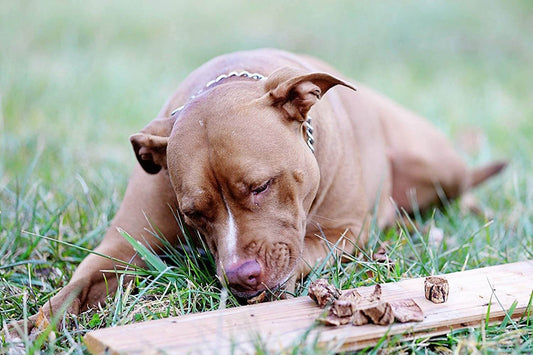
Are Bones Bad for Dogs Teeth: Trip to the Vet Uncovers Truth
Dawn Miller Nov 18, 20245 Minute ReadThe other evening, I was chatting with my friend, Jan. She had taken her poodle, Myra, to the vet that morning. Her girl wasn't eating well. The doctor didn't have good news.
Her teeth were in rough shape, some missing, others in various states of decay. She was likely experiencing pain while eating. It was time to switch to something soft that she could comfortably chew.
Jan asked her vet what had gone wrong. The doctor explained that tooth decay and loss are natural occurrences as dogs reach their senior years. Myra is 11.
But Jan wondered if she could have done more. Like most dog parents, Jan had never gotten into the habit of brushing her dog's teeth. And she wasn't stingy with the dog treats, some healthier than others. She had, on occasion, given Myra a dog bone. Now, in hindsight, she wondered: Are bones bad for dogs' teeth? Had she done the right thing?
Are Bones Bad for My Dog's Teeth?
Bones have long been celebrated as nature's toothbrush for dogs. And there's a good reason for it. They can be very healthy treats for dogs. But do they outweigh the risks?
The Benefits of Chewing on Marrow Bones for Dogs
Chewing on bones can scrape away tartar. This helps reduce bad breath and prevents gum disease. In fact, one study found 60-80% fewer dental disease-causing bacteria in the mouths of dogs who chew on bones regularly. Another study demonstrated why the bacteria count decreased so notably, with a 70% reduction in bacteria-harboring tartar on the teeth after 12 days of chewing on bones for dogs.
My terrier Pixie had terrible breath when I brought her home from the shelter. After a few weeks of regular chew time, her breath was so much better.
Then, if those bones are marrow bones for dogs, they also contain key nutrients like calcium and phosphorous, both important for strong teeth, bones, jaw strength, and muscle contraction. Plus, bone marrow contains significant collagen, a structural protein, and healthy fats that are known for their anti-inflammatory properties.
Chewing is mentally stimulating for dogs and can keep them calm and happy. When you give your dog a bone, they are less likely to chew on furniture or other forbidden items that could damage their teeth.
Those forbidden items could also be certain dog treats. Some are filled with added sugar which can damage teeth. So, If a dog bone is replacing a sugary dog treat, that's a net positive.
With that said, there are certainly some risks.
The Dental Risks of Chewing on Marrow Bones for Dogs
Tooth fractures are the most common complaint for real dog bones. And it's why there is some debate about: Are bones bad for dogs teeth in the first place?
Hard bones can be too hard for a dog's teeth.
The risk is real. So, it's important to manage the risks.
Reducing Risks to Get the Benefits of Marrow Bones
1. Reduce Fighting
The primary cause of broken teeth in dogs is not dog bones. It's getting into a fight with another dog. 63% of wild dogs have fractured teeth, and we could guess fighting is to blame.
The best way to protect your dog's teeth is to reduce fight risk through means like spaying/neutering, dog training, and obeying leash laws.
As a quick aside, dog bones can be great training tools. Reward good behavior with the best chew bones for dogs. Bones also fill an instinctual need; dogs have to chew on things that can ease anxiety and reduce "destructive behavior," like fighting with other dogs.
2. Consider the Type of "Bone"
Researchers classify antlers and hooves as "hard chewing materials". These are not technically bones. And certainly not the best chew bones for dogs.
They are too hard and cannot be softened enough to become edible.
On the other hand, they classify beef marrow bones for dogs as "edible chewing materials". They are naturally softer. But not too soft. That can be a problem, too!
Beef bones are also filled with nutritious bone marrow. So, dogs spend their time licking to get the marrow out. It's like a dog puzzle. Very stimulating.
3. Make Sure They're Prepared Correctly
It's important to choose bones prepared to the safest density through a slow and low-heat cooking process. This perfect density can reduce splintering risk while maintaining bone integrity.
4. Avoid Dairy Cow Bones
Some dog bones come from retired dairy cows. These are older cows who have spent their adult life producing milk. Not only does that deplete the bones of nutrients. Older cows often have osteoporosis, similar to aging humans.
5. Limit Chew Time
Gnawing time should only be around 15-20 minutes 2-3 times a week. When dogs are allowed free-range chewing, they are more likely to chew at higher intensities over a period of time, putting enough pressure on them to break a tooth.
20 minutes is plenty of time for a dog to clean their teeth and take advantage of some of that nutrient-dense marrow.
One study published in Veterinary Practice News found that a dog's bite force needs to be 1,281 Newtons (N) (± 403 N) directly applied to a single tooth to break a healthy canine tooth. They did not perform this study on live dogs, by the way, for animal welfare reasons.
As a fellow pet parent and animal lover, I knew you'd want to know that.
A complementary study used live dogs. It showed that test subjects could bite as hard as 1393 N. But the average bite force of dogs was only 256 N. And that bite force is distributed, not on one tooth. They did, however, note that bigger dogs tend to chew with greater force.
Limiting chew time and ensuring they're chewing on a bone filled with marrow, so that becomes the reward, manages this chewing intensity. My pups look forward to it. They remind me as chew time approaches.
Dog Bones for Senior Dogs
So, what about dogs like Jan's poodle, Myra, who already have damaged teeth? It depends on the age of the dog and the extent of dental damage. While there could be some dental cleaning benefits, extensive damage may cause pain.
Dog bones may not be a great idea for them. In this case, I would go with a softer dog treat that still has dental benefits, like beef trachea. It's made of cartilage instead of bone. So it's also got ample nutrition. But it's easier to gnaw healthy chew.
So, Are Bones Bad for Dogs' Teeth?
The answer? It depends. Bones can be a fantastic way to keep your dog’s teeth clean, jaws strong, and mind stimulated. But they must be chosen and used carefully.
The best dog treats for dental health are beef marrow bones prepared to a safe density. They're filled with tons of bone and teeth, supporting nutrition and helping my pups clean their teeth. So I don't have to.
And when the bone marrow is gone, I can still get a few more uses out of it with fun refill recipes, including healthy treats for dogs I already have in my kitchen like peanut butter and plain yogurt.
Available On:





